Pooka: Solitary Spirit And Not Entirely Benevolent Prankster In Irish Folklore
A. Sutherland - AncientPages.com - One of the most famous creatures of Celtic folklore is the Pooka (or puca).
Pooka is a November spirit and it is worth mentioning that November-day is sacred to this creature. This staring phantom has many shapes. One time it is a horse, another time it appears as an ass or perhaps a bull, a goat, or an eagle.
 The Pooka promised Brian Boru , the High King of Ireland. He was the only one man has ever managed to ride the pooka.
The Pooka promised Brian Boru , the High King of Ireland. He was the only one man has ever managed to ride the pooka.
Ancient people’s beliefs say that if you treat the Pooka with respect, this creature will give you helpful advice or an important prophecy.
It is commonly believed that the Pooka has the power of human speech, and used it to lead people away from harm.
But if the Pooka is offended, it can vandalize your house and destroy crops, when it usually comes at night and enjoys creating mischief and havoc.
This creature seems to be the most feared faerie in Ireland and many people don’t really understand why, because there are no records of any incidents of a Pooka actually causing a human any harm.
This psychological fear in people who believe in them can be compared to the devil in Christianity that creates fear in Christians.
According to legend, a Pooka, which lives in the mountains and hills, is a quick and skillful shapeshifter, capable of assuming a great variety of terrifying or nice and good-looking and trustworthy forms. It may appear as a goat, dog, rabbit, goblin, but often, it takes a shape of a black horse with a flowing mane and luminescent golden eyes.
In this form, the Pooka wanders across vast areas of countryside, always at night, destroying gates and fences, damaging crops, and generally causing small disasters.
What's important is that no matter what shape it takes, its fur is almost always very dark or black.
There is not only one Pooka but many of them; they can be found in any rural location across Ireland, in the vicinity of small springs and mountainous lakes. Such locations are called by the Irish people ‘Pooka Pools’ or ‘Pollaphuca’, which means Pooka or Demon Hole.
Over the last thousand years, Christians have changed the name of certain Pooka Pools, which today are called St. Patrick’s Wells
The old belief in this fascinating prankster still exists, along with a lot of old customs and superstitions. If you would like to consult the Pooka, you can wait at night on November 1, (the Pookas Day). The creature appears and gives prophecies and all kinds of warnings to those who wish to consult it.
Though not classified as wholly malevolent, this spirit is considered to be a vicious prankster that really enjoys confusing and terrifying both people and livestock.
Tradition has it that only one man has ever managed to ride the pooka and that was Brian Boru, the High King of Ireland.
Using a special bridle containing three hairs from the pooka's tail, Brian managed to control the magic horse and stay on its back until, exhausted, it surrendered to his will.
The Pooka promised Brian Boru two things: firstly, that it would no longer torment Christian people and ruin their property, and secondly, that it would never again attack an Irishmen except those who are drunk or abroad with evil intent.
The spirit kept the promises but only over the intervening years. Later, it seems to have forgotten its bargain and began new attacks on properties and travelers on their way home and so it continues to this day.
Written by – A. Sutherland - AncientPages.com Senior Staff Writer
Updated on January 22, 2024
Copyright © AncientPages.com All rights reserved. This material may not be published, broadcast, rewritten or redistributed in whole or part without the express written permission of AncientPages.com
More From Ancient Pages
-
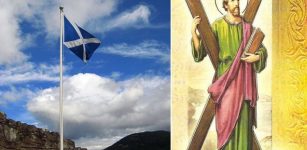 History Of The Saltire – Scotland’s National Flag And World’s Oldest Sovereign Flag
Featured Stories | Apr 3, 2016
History Of The Saltire – Scotland’s National Flag And World’s Oldest Sovereign Flag
Featured Stories | Apr 3, 2016 -
 ‘Vampire Of Lugnano’ And Old Beliefs In Witchcraft: Eerie And Weird Discovery In Italy
Archaeology | Oct 13, 2018
‘Vampire Of Lugnano’ And Old Beliefs In Witchcraft: Eerie And Weird Discovery In Italy
Archaeology | Oct 13, 2018 -
 Ireland, Wales And The Scholar Who Helped Unravel Their Celtic Connections
Featured Stories | Sep 25, 2024
Ireland, Wales And The Scholar Who Helped Unravel Their Celtic Connections
Featured Stories | Sep 25, 2024 -
 Treasures From Ancient City Of Hippos-Sussita Displayed In Exhibition For The First Time
Archaeology | Jan 3, 2018
Treasures From Ancient City Of Hippos-Sussita Displayed In Exhibition For The First Time
Archaeology | Jan 3, 2018 -
 Secrets Of Legendary Viking Crystal Sunstones And The Mysterious Uunartoq Artifact Unraveled
Artifacts | Jun 3, 2015
Secrets Of Legendary Viking Crystal Sunstones And The Mysterious Uunartoq Artifact Unraveled
Artifacts | Jun 3, 2015 -
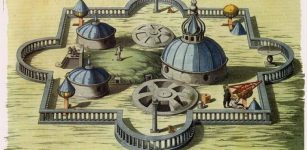 On This Day In History: Tycho Brahe 1st Sketches “Tychonic System” Of Solar System – On Feb 13, 1578
News | Feb 13, 2017
On This Day In History: Tycho Brahe 1st Sketches “Tychonic System” Of Solar System – On Feb 13, 1578
News | Feb 13, 2017 -
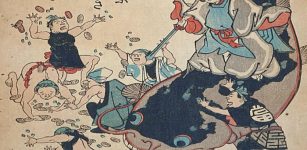 Odd Monster Namazu ‘Earth Shaker’ Was First Feared By People And Later Worshiped As Luminous Deity Repairing The World
Featured Stories | Feb 3, 2024
Odd Monster Namazu ‘Earth Shaker’ Was First Feared By People And Later Worshiped As Luminous Deity Repairing The World
Featured Stories | Feb 3, 2024 -
 Hedeby: Prestigious Trading Center And One Of The Largest Baltic Sea Ports In Viking Age
History | Jan 23, 2025
Hedeby: Prestigious Trading Center And One Of The Largest Baltic Sea Ports In Viking Age
History | Jan 23, 2025 -
 Three Ingots Shed Light On The Mining Exploitation Of The Sierras de Córdoba Mountain Range
Archaeology | May 8, 2024
Three Ingots Shed Light On The Mining Exploitation Of The Sierras de Córdoba Mountain Range
Archaeology | May 8, 2024 -
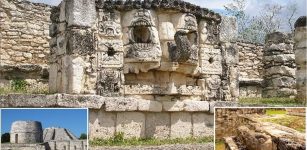 Rise Of League Of Mayapán And The Last Great Maya Capital
Featured Stories | Aug 23, 2017
Rise Of League Of Mayapán And The Last Great Maya Capital
Featured Stories | Aug 23, 2017 -
 How Did The Renaissance Change Europe?
Ancient History Facts | Oct 10, 2019
How Did The Renaissance Change Europe?
Ancient History Facts | Oct 10, 2019 -
 Rök Stone (Rök Runestone): Longest Runic Inscription Ever Discovered
Featured Stories | Jun 12, 2024
Rök Stone (Rök Runestone): Longest Runic Inscription Ever Discovered
Featured Stories | Jun 12, 2024 -
 13,000-Year-Old Eye Needles Made By Early North Americans Discovered
Archaeology | Dec 2, 2024
13,000-Year-Old Eye Needles Made By Early North Americans Discovered
Archaeology | Dec 2, 2024 -
 Paris Of Troy: He Caused Destruction Of Troy As The Seer Had Predicted
Featured Stories | Mar 26, 2019
Paris Of Troy: He Caused Destruction Of Troy As The Seer Had Predicted
Featured Stories | Mar 26, 2019 -
 Lost Ancient Extraterrestrial Knowledge And The Ignorance Of Modern Man
Ancient Mysteries | Jul 30, 2020
Lost Ancient Extraterrestrial Knowledge And The Ignorance Of Modern Man
Ancient Mysteries | Jul 30, 2020 -
 Cedar – Sacred Tree With Medicine Power In Native American Beliefs
Featured Stories | Aug 26, 2024
Cedar – Sacred Tree With Medicine Power In Native American Beliefs
Featured Stories | Aug 26, 2024 -
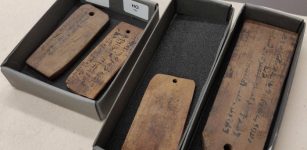 Scientists Reconstruct The Climate Of The Ancient World Using Small Wooden Artifacts And Mummies
Archaeology | Apr 5, 2023
Scientists Reconstruct The Climate Of The Ancient World Using Small Wooden Artifacts And Mummies
Archaeology | Apr 5, 2023 -
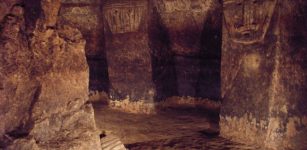 Huge Subterranean Pre-Columbian Shaft Tombs In Tierradentro, Colombia
Featured Stories | Apr 28, 2021
Huge Subterranean Pre-Columbian Shaft Tombs In Tierradentro, Colombia
Featured Stories | Apr 28, 2021 -
 Burial Chambers In The Pyramids Of Tombos Change Our Understanding Of Ancient Egyptian Civilization
Archaeology | Mar 25, 2025
Burial Chambers In The Pyramids Of Tombos Change Our Understanding Of Ancient Egyptian Civilization
Archaeology | Mar 25, 2025 -
 On This Day In History: Foundation Stone Of The Royal Greenwich Observatory In London Was Laid – On August 10, 1675
News | Aug 10, 2016
On This Day In History: Foundation Stone Of The Royal Greenwich Observatory In London Was Laid – On August 10, 1675
News | Aug 10, 2016
